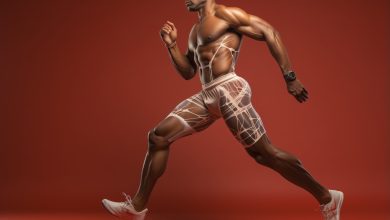How to Choose the Right Running Shoes for Your Foot Type
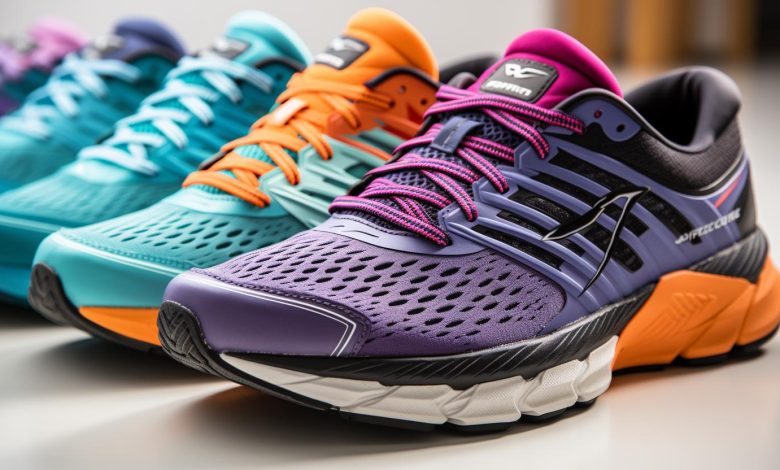
Imagine yourself lacing up your running shoes, ready to hit the pavement and conquer your next run. But wait! Are you wearing the right shoes for your foot type? Choosing the perfect pair can make all the difference in preventing common foot problems and maximizing your performance.
In this article, we will guide you through the process of understanding your foot type, identifying potential issues, evaluating shoe features, trying on different options, and ultimately finding the perfect fit for your unique feet.
Get ready to step into comfort and confidence on every stride!
Understanding Your Foot Type
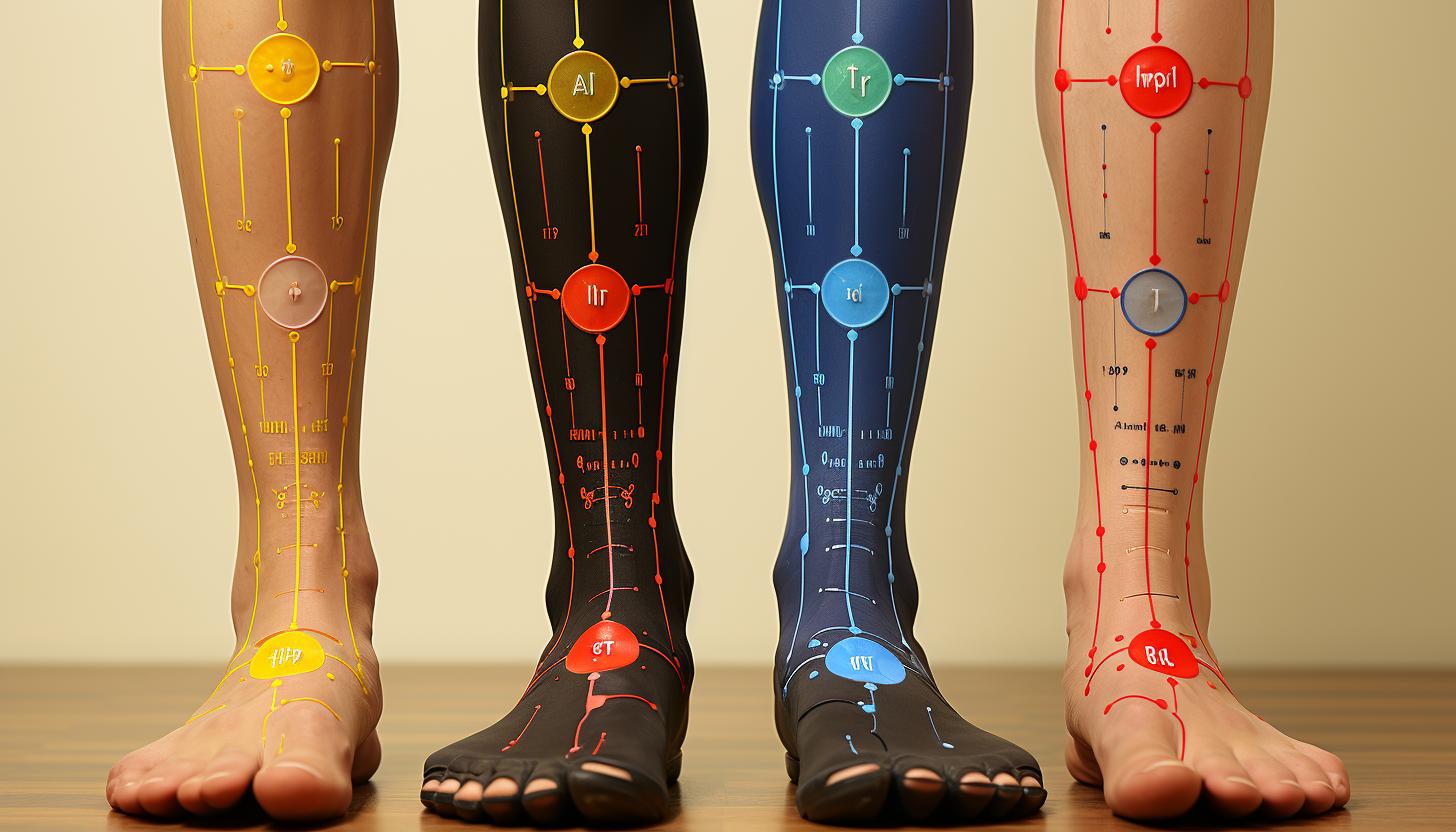
Understanding your foot type is essential when choosing the right running shoes. By understanding the anatomy of your feet and determining your arch type, you can ensure that you find shoes that provide proper support and comfort for your specific needs.
To begin, let’s delve into foot anatomy. Your feet are made up of 26 bones, numerous joints, ligaments, tendons, and muscles. Each component plays a crucial role in maintaining stability and absorbing shock while running. The arches of your feet – medial (inner), lateral (outer), and transverse (across) – also contribute to weight distribution and impact absorption.
Determining your arch type is the next step in understanding your foot type. There are three main types: high arches, normal arches, and flat arches. High-arched individuals have an exaggerated curve in their feet, which can lead to less natural shock absorption. Normal-arched individuals have a moderate curve that provides a good balance of stability and flexibility. Lastly, flat-arched individuals have minimal or no curve at all, resulting in decreased shock absorption.
Knowing your specific foot anatomy and arch type will guide you towards finding the right running shoes that cater to your needs. Stay tuned for our next subtopic on how different shoe features can accommodate various foot types!
Identifying Common Foot Problems
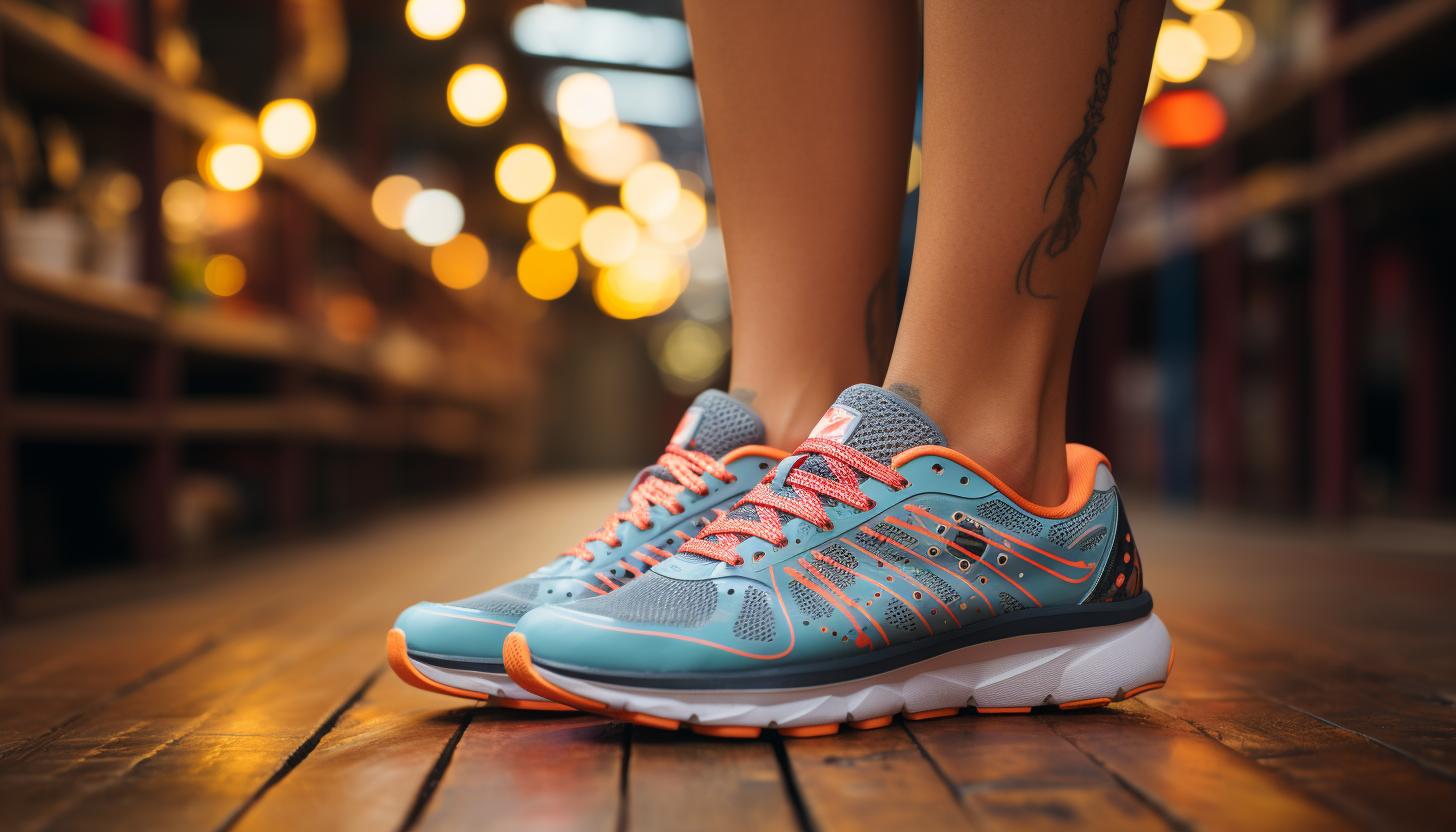
To identify common foot problems, you should first examine any discomfort or pain you may be experiencing. It’s important to pay attention to your feet and address any issues early on to prevent them from worsening.
One common foot problem is plantar fasciitis, which is characterized by pain in the heel or arch of the foot. If you’re experiencing this condition, there are several steps you can take to overcome it. Firstly, wearing supportive shoes that provide proper cushioning and arch support can help alleviate symptoms. Additionally, stretching exercises for the calf muscles and plantar fascia can help relieve tension and reduce pain.
Another foot problem that many people face is bunions, which are painful bony bumps that form at the base of the big toe. To prevent bunions from developing or worsening, it’s essential to wear shoes that fit properly and don’t squeeze or put pressure on the toes. Choosing footwear with a wide toe box and avoiding high heels can also help alleviate discomfort caused by bunions.
Evaluating Shoe Features for Your Foot Type
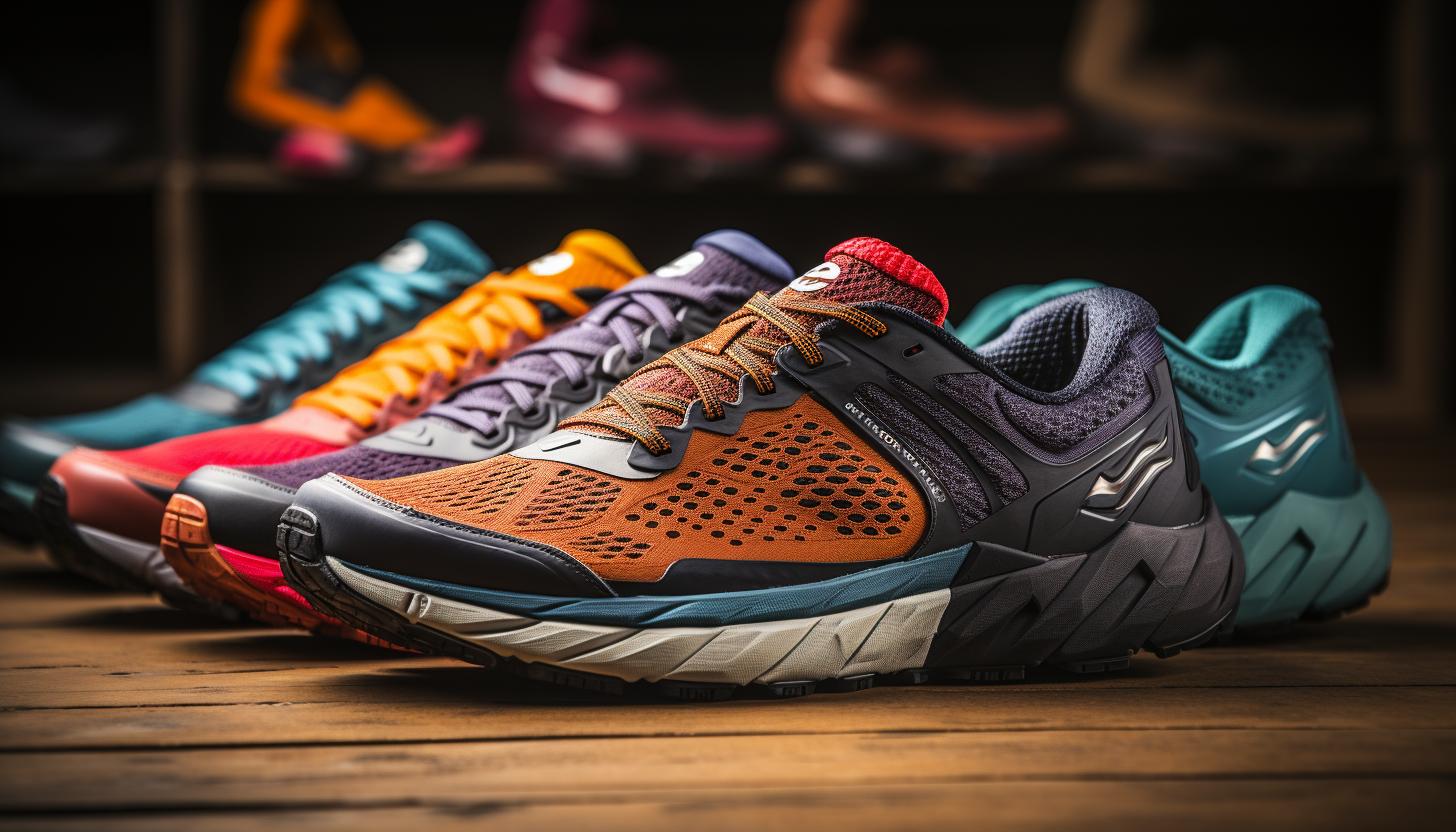
When evaluating shoe features for your specific foot type, it’s important to consider factors such as arch support and cushioning. These two features play a crucial role in providing comfort and preventing injuries while running or engaging in other physical activities.
Arch support helps maintain the natural alignment of your feet, reducing strain on the muscles and ligaments. Cushioning, on the other hand, absorbs shock and provides extra padding for added comfort.
In addition to arch support and cushioning, another important aspect to evaluate when choosing running shoes is durability. You want shoes that will last through many miles of training without falling apart. To assess durability, pay attention to the materials used in the construction of the shoe. Different materials have varying levels of durability. For example, synthetic materials like nylon tend to be more durable than mesh fabrics.
Comparing different shoe materials can also help you determine which ones are most suitable for your needs. Some common materials used in running shoes include leather, suede, mesh, and synthetic fabrics. Each material has its own advantages and disadvantages in terms of breathability, flexibility, weight, and water resistance.
Tips for Trying on Running Shoes
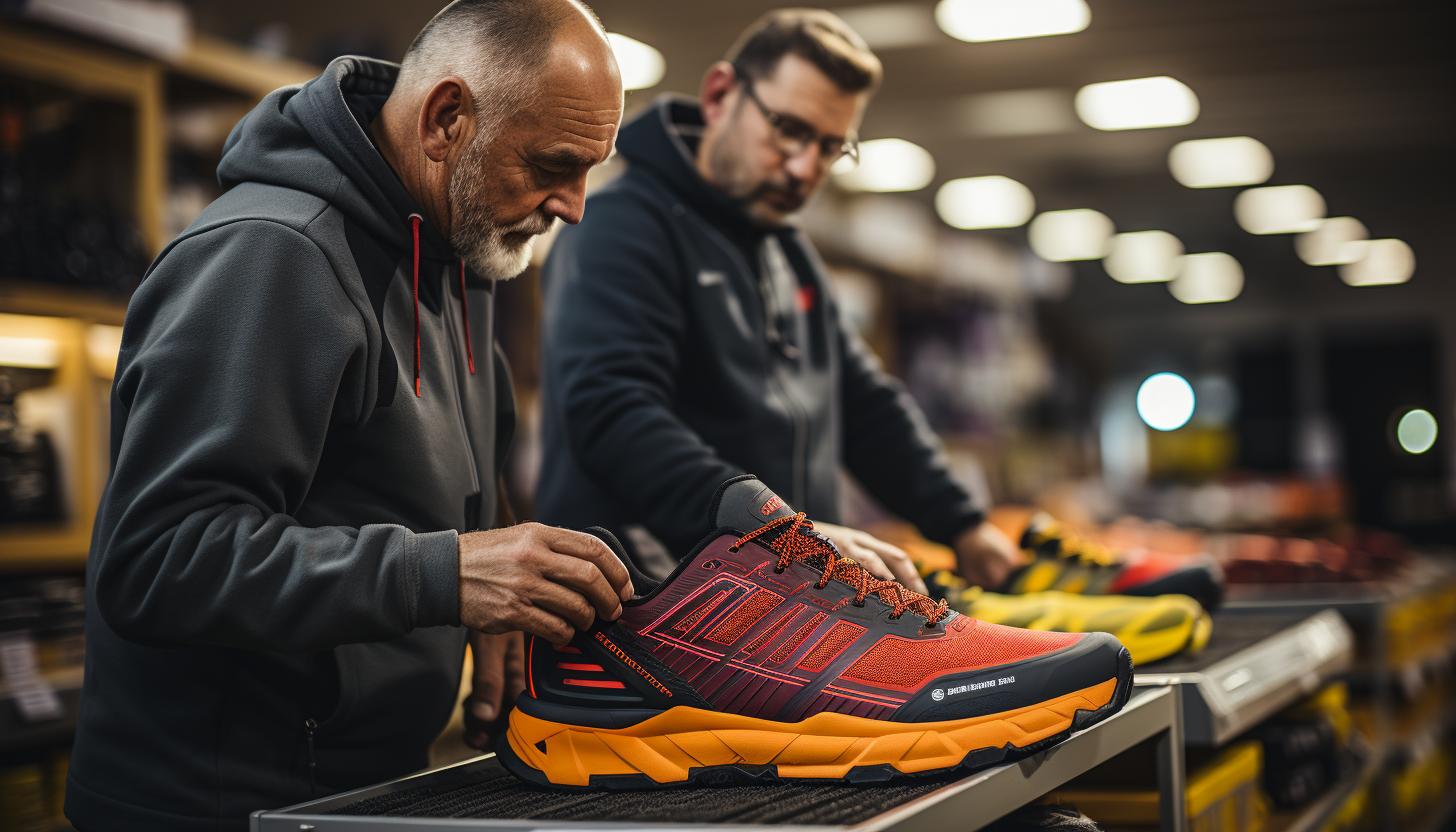
Trying on running shoes can be a helpful way to determine the right fit and comfort for your feet. When it comes to finding the perfect pair, there are a few shoe sizing considerations to keep in mind.
First, remember that shoe sizes can vary between brands, so don’t rely solely on your usual size. It’s important to try on multiple brands and styles to see which ones feel best for you.
When trying on running shoes, start by standing up and walking around in them. Pay attention to how they feel around your toes, heels, and arches. Look for any areas of tightness or discomfort. Remember that your feet may swell when you’re running, so consider going up half a size if needed.
The importance of trying on multiple brands cannot be overstated. Different brands have different fits and cushioning technologies that may work better for your foot type. By trying on various options, you’ll have a better chance of finding the one that provides optimal support and comfort.
In conclusion, trying on running shoes is crucial in determining the right fit for your feet. Considerations such as shoe sizing variations between brands and the importance of trying on multiple options should not be overlooked.
Now let’s explore how to find the perfect fit once you’ve narrowed down your choices.
Finding the Perfect Fit
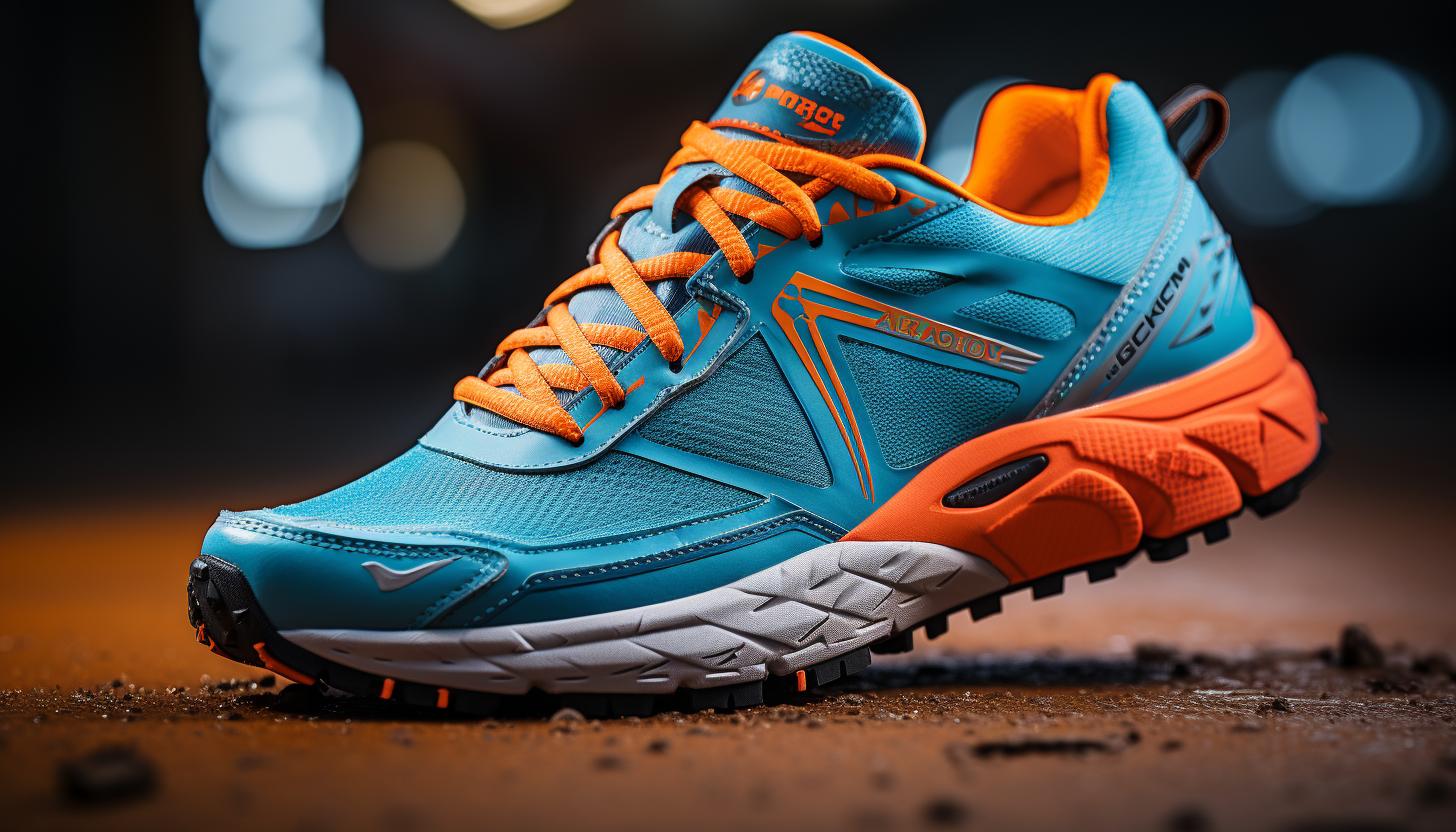
Once you’ve narrowed down your options, it’s crucial to find the perfect fit for optimal support and comfort in your running shoes. Here are three reasons why finding the right fit is so important:
1. Importance of proper shoe size: Wearing shoes that don’t fit properly can lead to a range of issues, from blisters and calluses to foot pain and even injuries. Your running shoes should provide enough room for your toes to move freely, without being too loose or too tight. Ensuring the correct shoe size will help prevent discomfort and promote better performance.
2. Benefits of consulting a podiatrist: If you’re unsure about your foot type or have specific concerns like pronation or high arches, consulting a podiatrist can be incredibly beneficial. They can analyze your foot structure and recommend the most suitable type of running shoe for you. This personalized guidance can help prevent injury and enhance overall comfort during your runs.
3. Enhanced support and stability: The right fit means that your feet are properly supported throughout each stride, reducing the risk of overpronation or supination. This increased stability can improve your balance, reduce strain on joints, and minimize the chance of developing common running injuries.
Conclusion
Now that you understand your foot type and have identified common foot problems, it’s time to evaluate shoe features for your specific needs.
Remember to consider factors such as arch support, cushioning, and stability when choosing the right running shoes.
When trying on shoes, pay attention to how they feel and make sure they provide a perfect fit.
Finding the ideal pair of running shoes can greatly enhance your performance and prevent injuries.
So go ahead, lace up those shoes and get ready for an incredible running experience like never before!



